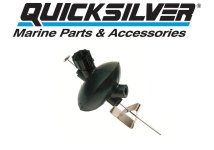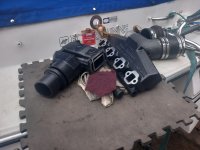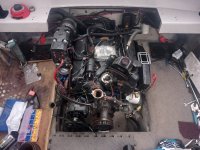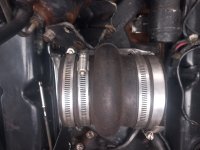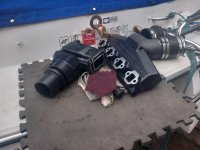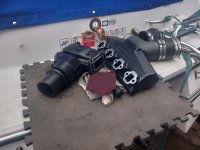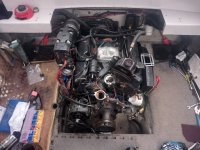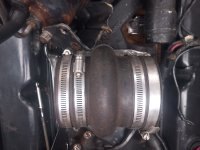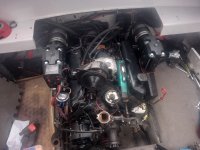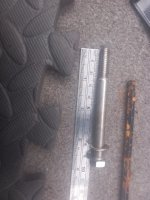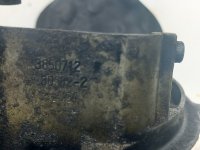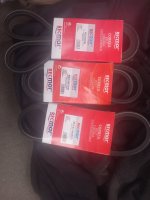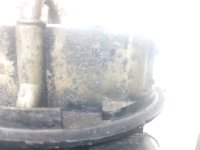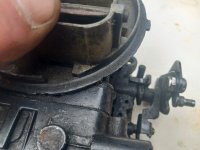Still need a rebuild kit for the 3850702 Holley 2bbl carb. I phoned the marina (link above) today, they told me they couldn't guarantee the rebuild kit they list would be compatible with my carb. I think there's a good chance it would be compatible but I'd rather buy one that the seller says is compatible.
I removed the level sender to see if the hole would be wide enough to lower the fuel injection pump into the tank through it, the hole isn't wide enough. But I did find the fuel level sender is broken, it's seized so the float arm couldn't rise on the fuel, so I'll be needing a new fuel level sender.
More problems found today. Plan was to empty the boat fuel tank by pumping fuel out of it using a pump connected to the fuel line. The first few pints I'd pump into glass cookware jugs to check condition then if the fuel seemed OK pump the rest of it into my car and jerry cans. The pump I used isn't self priming so I only managed to pump a few pints out anyway... but those few pints contained water :-(. I had left the boat with the tank full of E5 last year to full to help prevent condensation and didn't seem to have any problems with water in fuel when I last used it so I don't know where the water came from. Removed the level sender to see if the hole would be wide enough to lower the fuel injection pump into the tank through it, the hole isn't wide enough. But I did find the fuel level sender is broken, it's seized so the float arm couldn't rise on the fuel, so I'll be needing a new fuel level sender.
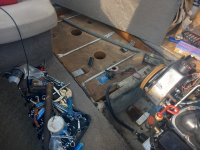
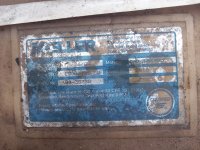
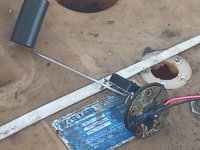
I ordered a low pressure pump that should be self priming so I hope to be able to pump the rest of the fuel out using that.
Took one step backward today, removed the mechanical fuel pump, thought it better to remove it to flush it through with fuel from a jerry can I pumped out of the boat tank... didn't even manage to get any good fuel out of the boat tank into a jerry can. I suppose at least I know of a good reason why the fuel gauge didn't work.
Does anyone know if the level sender (for the 1996 car instrument cluster style Four Winns gauges) should be 240>33Ohm or 0>160Ohm?
I forgot to measure the tank depth. Can anyone tell me the depth from the tank model number Moeller 2910?






















